Fantasia 2020, Part XXIII: The Dark and the Wicked
 One of the fascinating things about art is the way it speaks to its exact moment. That’s even more fascinating with film, which has such a long gestation time; write a movie, shoot the movie, then edit the movie and work on it in postproduction, and it’ll come out years after it was conceived. Which is why it was fascinating to see so many films at this year’s Fantasia that revolved around haunted houses. Occasionally the haunted building might be something like a school (as in Detention), but there were a lot of stories this year about people trapped in a structure, often with family, perhaps in a family home they’d returned to. Which strikes me as resonating with many situations I’ve heard about these past few months. The first movie I saw on Day 9 of the festival, The Block Island Sound, was an example of this trend. So was the second.
One of the fascinating things about art is the way it speaks to its exact moment. That’s even more fascinating with film, which has such a long gestation time; write a movie, shoot the movie, then edit the movie and work on it in postproduction, and it’ll come out years after it was conceived. Which is why it was fascinating to see so many films at this year’s Fantasia that revolved around haunted houses. Occasionally the haunted building might be something like a school (as in Detention), but there were a lot of stories this year about people trapped in a structure, often with family, perhaps in a family home they’d returned to. Which strikes me as resonating with many situations I’ve heard about these past few months. The first movie I saw on Day 9 of the festival, The Block Island Sound, was an example of this trend. So was the second.
The Dark and the Wicked was written and directed by Bryan Bertino, and set on an isolated farm in Texas (Bertino’s own family home, in fact) where an old man (Michael Zagst) is dying. His wife (Julie Oliver-Touchstone) tries to tend him, with the assistance of a visiting nurse (Lynn Andrews). But he’s going to die soon, and his adult children Louise (Marin Ireland) and Michael (Michael Abbott Jr.) have returned to be with him. Only to find some other supernatural force also lurks in the dark farm. Horrible things happen. An old priest (Xander Berkeley) comes by to offer assistance, but is rejected. Louise and Michael will have to find the power to deal with the darkness on their own. If they can even understand what they’re dealing with.
The first thing to understand about this movie is that it is purely a horror movie. It’s not horror mediated by some other aspect (like the dark-fantasy fairy-tale feel of Detention, or the family drama of The Block Island Sound). This is a movie about a place that has become the locus for clearly supernatural evil, and the story and look of the film follow from that. It’s drenched in lovely dark shadows. Natural vistas have an element of the sublime in the last light of the sun, but are empty of human life. We watch the characters flail about in this landscape, and know there will be no happy endings here.
There is in fact a good sense of balance to the mystery and the rules by which the supernatural evil operates. The dreamlike half-understood logic of the wickedness is a specific and effective horror on its own. We have, in fact, almost no idea what that logic is. But it does exist, and the characters’ refusal to try to understand it, their reluctance to accept anything supernatural is happening, is terrifying on its own. I would say that this feel fades a bit at the end, as the effect of the supernatural crescendos and the feel of rules that limit it fades. For much of the movie, though, there is a sense that the evil cannot simply wipe the characters out at any moment; that it can be fought, and indeed that it can be understood, but that the characters are choosing not to do either.
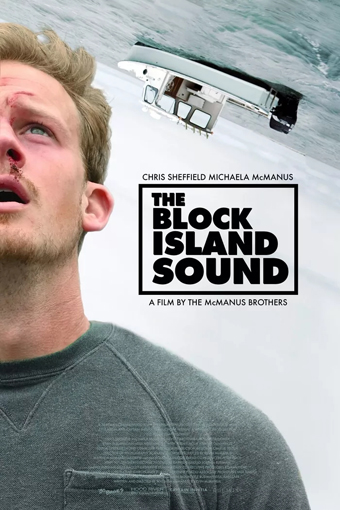 Day 9 of Fantasia began for me with The Block Island Sound. Directed by brothers Kevin and Matthew McManus, and written by Matthew, it’s a horror movie named for a body of water off the coast of Rhode Island. It’s the rare horror story that deals with inhuman mysteries on the northeastern coast of the United States while not feeling Lovecraftian at all.
Day 9 of Fantasia began for me with The Block Island Sound. Directed by brothers Kevin and Matthew McManus, and written by Matthew, it’s a horror movie named for a body of water off the coast of Rhode Island. It’s the rare horror story that deals with inhuman mysteries on the northeastern coast of the United States while not feeling Lovecraftian at all.
 One of the lovely things about covering Fantasia is the chance to see genre classics I missed the first time around, often brought back to the screen in a restored version. Again in 2020, notwithstanding its streaming-only nature, Fantasia revived a number of great films from prior years. While my own inefficiency with scheduling meant I ended up missing Johnnie To’s A Hero Never Dies, I saw many of the others, including Wilson Yip’s 2005 movie SPL: Kill Zone (also just Kill Zone, originally SPL: Sha Po Lang, 殺破狼).
One of the lovely things about covering Fantasia is the chance to see genre classics I missed the first time around, often brought back to the screen in a restored version. Again in 2020, notwithstanding its streaming-only nature, Fantasia revived a number of great films from prior years. While my own inefficiency with scheduling meant I ended up missing Johnnie To’s A Hero Never Dies, I saw many of the others, including Wilson Yip’s 2005 movie SPL: Kill Zone (also just Kill Zone, originally SPL: Sha Po Lang, 殺破狼).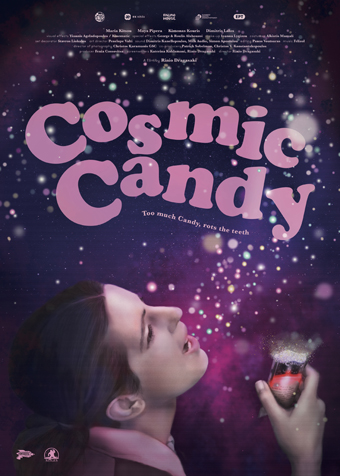 There is, or was, or might have been according to some, a movement in Greek cinema that started and flourished in the first half of the second decade of the twenty-first century called the Greek Weird Wave. This movement,
There is, or was, or might have been according to some, a movement in Greek cinema that started and flourished in the first half of the second decade of the twenty-first century called the Greek Weird Wave. This movement, 
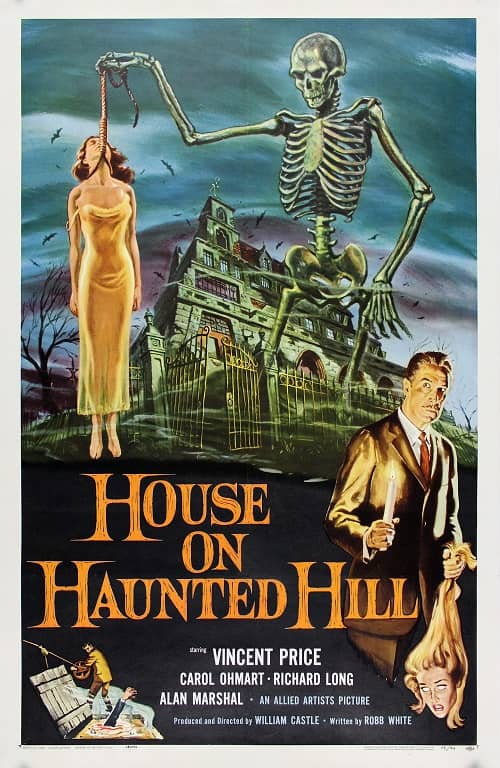
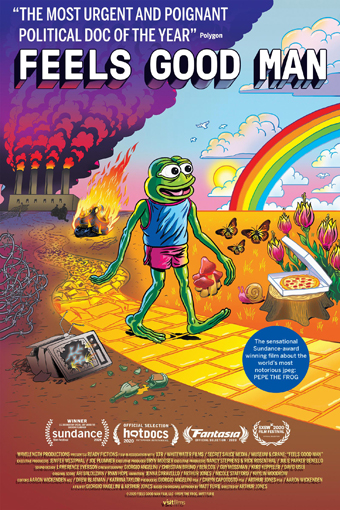 I try to keep an eye on comics, but like many people my first exposure to Pepe the Frog was as a poorly-drawn meme spouting racism. I remember reading about Pepe’s comics origin, but the name of Matt Furie, the cartoonist who created him, remained a piece of trivia. As did his comic Boy’s Club, where the frog first appeared. Now there’s a documentary telling the whole story of Furie, Pepe, and Boy’s Club — a tale of politics, appropriation, and how art can be used in ways the artist could not imagine, for worse and for better.
I try to keep an eye on comics, but like many people my first exposure to Pepe the Frog was as a poorly-drawn meme spouting racism. I remember reading about Pepe’s comics origin, but the name of Matt Furie, the cartoonist who created him, remained a piece of trivia. As did his comic Boy’s Club, where the frog first appeared. Now there’s a documentary telling the whole story of Furie, Pepe, and Boy’s Club — a tale of politics, appropriation, and how art can be used in ways the artist could not imagine, for worse and for better. 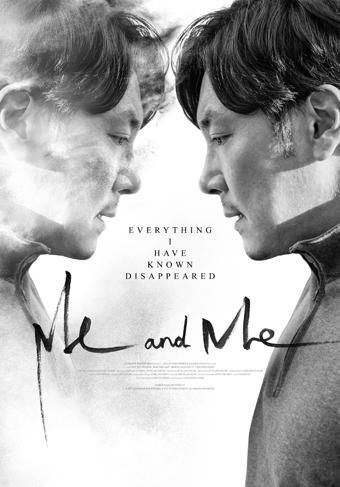 One of the genuinely wonderful things about covering a film festival is occasionally getting to be among the first audiences for a movie trying something new. That is, being an early viewer of a movie that does things unlike other movies, and getting to make one’s own mind up on whether those things work. Movies at a festival have often not had a critical consensus formed around them, and have not yet been defined by other writers or had their influences mapped out. You as the viewer are alone with the thing, almost contextless, in a way that’s rare these days.
One of the genuinely wonderful things about covering a film festival is occasionally getting to be among the first audiences for a movie trying something new. That is, being an early viewer of a movie that does things unlike other movies, and getting to make one’s own mind up on whether those things work. Movies at a festival have often not had a critical consensus formed around them, and have not yet been defined by other writers or had their influences mapped out. You as the viewer are alone with the thing, almost contextless, in a way that’s rare these days.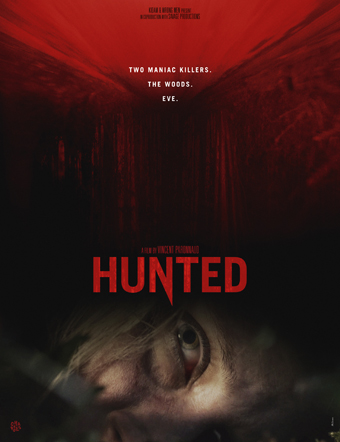 Watching a film festival at home instead of in theatres raises a question that’s become a much-debated point over the last couple of years: is the experience of viewing a movie on a TV screen essentially different and essentially lesser than watching the same movie in a theatre? I don’t think there’s a single answer to this question. Different movies and different viewers and different circumstances will create better or worse scenarios. I think it is probably safe to say that the theatrical experience has much more sensory power; that the powerful sound system and the controlled environment and the full dark of a theatre will usually be more immediately overwhelming to a viewer. But it’s reasonable to wonder if a movie that relies on sheer sensory power can be called ‘a good movie.’
Watching a film festival at home instead of in theatres raises a question that’s become a much-debated point over the last couple of years: is the experience of viewing a movie on a TV screen essentially different and essentially lesser than watching the same movie in a theatre? I don’t think there’s a single answer to this question. Different movies and different viewers and different circumstances will create better or worse scenarios. I think it is probably safe to say that the theatrical experience has much more sensory power; that the powerful sound system and the controlled environment and the full dark of a theatre will usually be more immediately overwhelming to a viewer. But it’s reasonable to wonder if a movie that relies on sheer sensory power can be called ‘a good movie.’